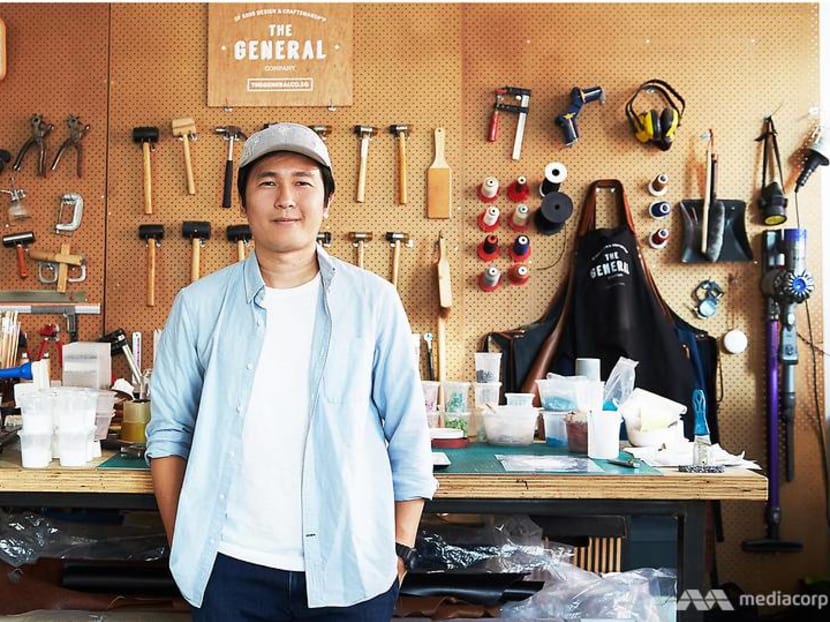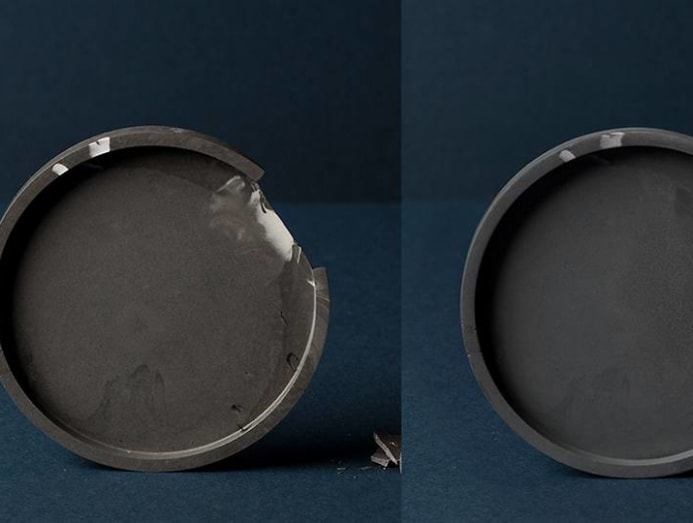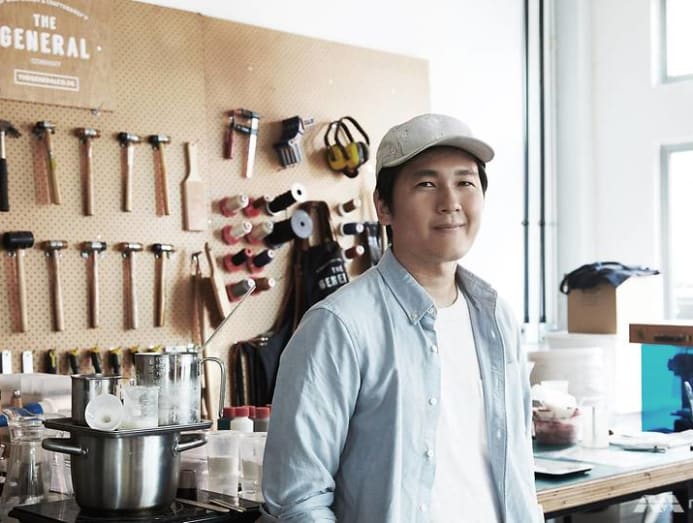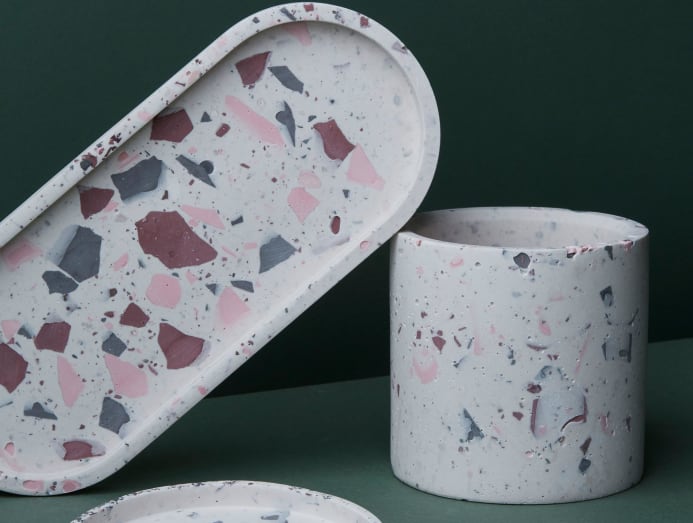How this Singapore entrepreneur is creating stylish, sustainable homeware
Colin Chen, the man behind craftsmen collective The General Co in Jalan Besar, is on a quest to craft stylish homeware with longer lifespans, in an attempt to provide an alternative to plastics and ceramics.

Colin Chen, the man behind craftsmen collective The General Co in Jalan Besar. (Photo: Kelvin Chia)
As a restaurateur, Colin Chen finds it difficult to resist the allure of a beautiful piece of dinnerware. When he encounters such creations on his travels, he purchases them for The Refinery, his modern yakitori restaurant in Jalan Besar. But after a fortnight, he sometimes returns to find pieces damaged by careless handling.
“The whole product is still beautiful. Ninety-nine per cent of it is still intact. It’s just that tiny little bit that’s flawed, but we have to store or dispose of that piece as we don’t want diners to cut themselves while eating,” said Chen.
Frustrated by the growing pile of plates made obsolete by tiny imperfections, Chen set out to create pieces that could be easily restored. Turning away from more fragile mediums such as ceramic or porcelain, the 37-year-old began experimenting with a durable form of eco resin known as Jesmonite. The acrylic-modified gypsum composite is a water-based material, making it more environmentally friendly than a typical solvent-based acrylic.

To create a plate, Chen begins by mixing the eco resin solution with colour pigments. The solution is then poured into a silicone mould and left to cure. After it is sanded down by hand, it is finished with a clear, protective coating. “We can make this within a day,” said Chen, as he holds up a plate, letting this reporter run her fingers across it. The end product is smooth and cool to the touch, with a tactile quality approximating that of stoneware.
When eco resin dinnerware is chipped or broken, Chen simply recasts the fragments, along with new eco resin material, into the original mould. Drawing a parallel to kintsugi, a Japanese method of repairing broken ceramics using powdered metals mixed with water and lacquer, Chen believes that this medium and method of production is a way to extend the longevity of a product.
“A lot of times, people buy an object, and at the end of its life, its value drops to zero. We want to create a loop where people can again find value in the things they own.”
“A lot of times, people buy an object, and at the end of its life, its value drops to zero. We want to create a loop where people can again find value in the things they own.” – Colin Chen
His methods appear to run counterintuitive to conventional business sense. Any savvy retailer stands to profit from a customer returning to buy multiple goods, not one who makes a one-time purchase. But Chen’s attempt to blunt throwaway culture comes at a time where consumers are purchasing carbon offsets for intercontinental flights, eschewing plastic straws, and swearing off meat in the name of climate change.
READ> Looking back at the 2010s: How the luxury industry embraced sustainability

How timely then, that his eco-friendly wares hit the market late last year. After months of toiling in a workshop no bigger than a security guardhouse, Chen finally launched his first batch of plates, along with an assortment of tableware and homeware, at the November 2019 edition of Boutique Fairs Singapore.
Sold under a brand called Grams, customers lapped up over a 100 pieces and placed orders for more. The notion of sustainable homeware, it seems, had just as strong an appeal as a collection mirroring the leading design aesthetic of our time – circular coasters in millennial pink, planters boasting a terrazzo pattern, and plates featuring monochromatic swirls.

With small round dishes going at S$24 and larger trays priced from S$78, Grams might be more expensive than Ikea, but still more affordable than an object of desire from Danish design company Hay.
In many ways, Grams’ sustainability-driven ethos is a culmination of Chen’s decade-long journey as a serial entrepreneur, one he embarked on while still studying at the National University of Singapore’s Business School.
After saving up for his first Apple 12-inch PowerBook G4, he realised it didn’t come with a case. Instead of paying for expensive laptop cases, he cut and sewed his own under the guidance of his mother, a traditional dressmaker. He went on to create an array electronic device coverings, selling them under a brand dubbed Made by Fabrix.
“While working on Fabrix, I ended up with so much excess fabric – and that’s just from a small production standpoint,” said Chen. “I tried to recycle materials by making them into smaller products, but even then, we still had surplus fabric.”
In 2011, when he founded The General Co, a collective that grooms and promotes local craftsmen, he encountered even more waste generated in the process of production. This time around, it wasn’t mere fabric, but leftover scraps of fine leather.
Chen, himself trained as a leather artisan, hopes to utilise Grams as a vessel for upcycling surplus material lying around the workshop.
“Traditional ateliers that produce for luxury brands end up with a lot of [leather] off-cuts. So they use these off-cuts to produce alternative pieces like bag charms. That’s the vision – that we can utilise the excess materials we find across my businesses and put it back into objects for Grams,” shared Chen, citing a tray fitted with leather handles as a possibility.
Other ideas are more radical. “Through their woodwork, [carpenters] Roger & Sons ends up with a lot of sawdust. We’ve been experimenting with an eco resin and sawdust composition,” said Chen. Similarly, recycled coffee grounds can also be incorporated into resin to derive different colours and textures.
The possibilities are endless. But for Chen, Grams is above all a vehicle for a larger conversation on sustainable consumption. “When given a choice to recycle, most people would, but the products that we come across often serve a single purpose. When that purpose has passed, you realise you have no need for the object,” said Chen.
To this end, he is happy to have customers return the product so he can crush it down and incorporate the material in future collections, or trade in one Grams items for another (top-up fees apply). “The idea of this whole circular economy is that we can all hold on to something we value. The object can be passed back to the maker or passed on to someone else who can derive value from it.”
“Traditional ateliers that produce for luxury brands end up with a lot of [leather] off-cuts. So they use these off-cuts to produce alternative pieces like bag charms. That’s the vision – that we can utilise the excess materials we find across my businesses and put it back into objects for Grams.” – Colin Chen





